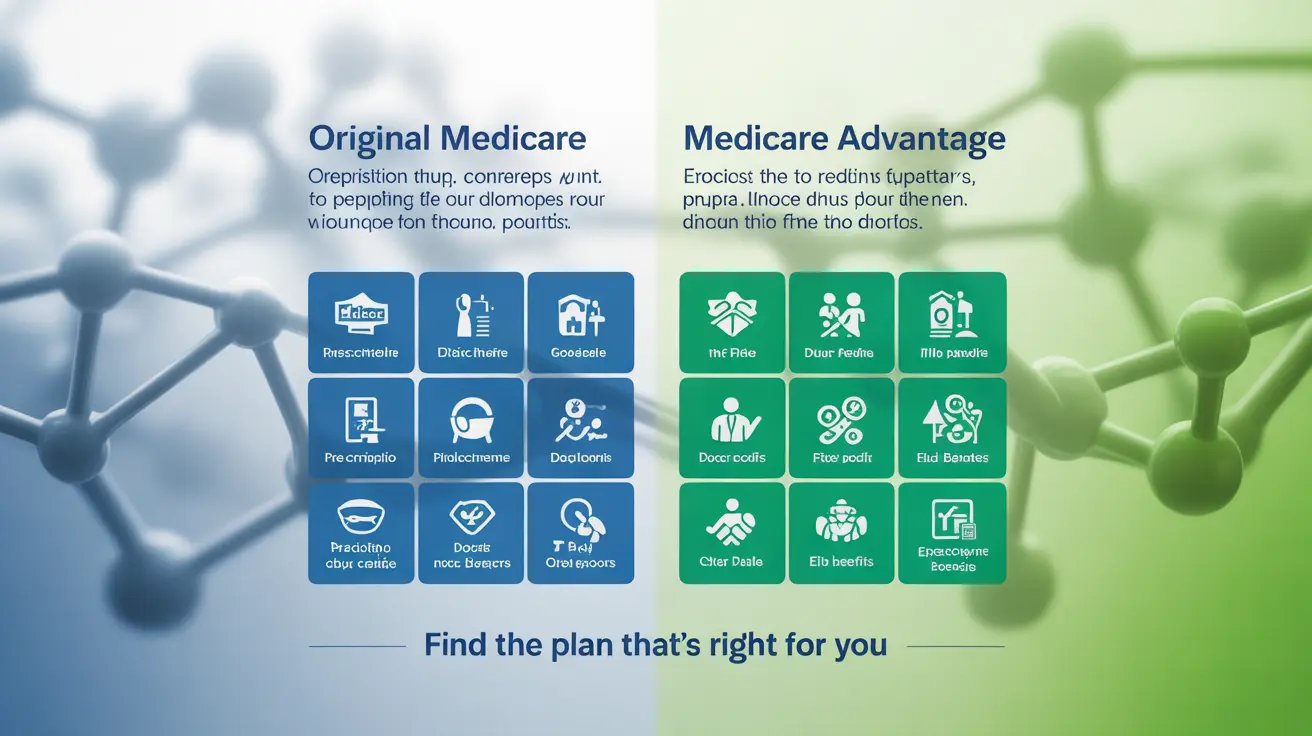Navigating Medicare options can feel overwhelming, but understanding how to choose the right coverage is crucial for your health and financial well-being. Whether you're newly eligible for Medicare or reviewing your current coverage, these essential Medicare tips will help you make informed decisions about your healthcare coverage.
This comprehensive guide will walk you through the key considerations for selecting Medicare coverage that best suits your needs, from understanding the basic differences between plan types to evaluating prescription drug coverage options.
Understanding Original Medicare vs. Medicare Advantage
Original Medicare and Medicare Advantage plans represent two distinctly different approaches to Medicare coverage. Original Medicare, managed by the federal government, includes Part A (hospital insurance) and Part B (medical insurance). Medicare Advantage plans, offered by private insurance companies, combine these benefits into one plan and often include additional coverage.
Key differences include:
- Network restrictions (Original Medicare has no networks, while Advantage plans typically do)
- Out-of-pocket costs and maximums
- Additional benefits availability
- Prescription drug coverage integration
Evaluating Your Healthcare Needs and Budget
Before selecting a Medicare plan, carefully assess your current and anticipated healthcare needs. Consider factors such as:
- Current health conditions and medications
- Preferred healthcare providers and facilities
- Expected medical procedures or treatments
- Monthly premium budget
- Anticipated out-of-pocket expenses
The Role of Medigap Policies
Medigap policies, also known as Medicare Supplement Insurance, can help cover costs not paid by Original Medicare. These policies can significantly reduce your out-of-pocket expenses but come with additional premium costs. Understanding your options for supplemental coverage is crucial for managing healthcare expenses effectively.
Comparing Medicare Advantage Plans
When evaluating Medicare Advantage plans in your area, focus on these key aspects:
- Network coverage and provider availability
- Premium costs and cost-sharing requirements
- Additional benefits (dental, vision, hearing, etc.)
- Star ratings and quality scores
- Prescription drug coverage details
Understanding Prescription Drug Coverage
Whether through a standalone Part D plan or included in a Medicare Advantage plan, prescription drug coverage requires careful consideration. Key factors include:
- Your current medications and their tier placement
- Pharmacy network restrictions
- Annual deductibles and copayments
- Coverage during the "donut hole"
- Formulary restrictions and requirements
Frequently Asked Questions
What are the main differences between Original Medicare and Medicare Advantage plans?
Original Medicare is a federal program offering standardized coverage nationwide, while Medicare Advantage plans are private insurance alternatives that often include additional benefits like dental and vision coverage. Original Medicare allows you to see any provider accepting Medicare, while Advantage plans typically require using network providers.
How do I choose the best Medicare plan for my healthcare needs and budget?
Evaluate your current health status, medications, preferred providers, and financial situation. Compare plan costs, including premiums, deductibles, and copayments. Consider whether you need additional benefits not covered by Original Medicare, and check if your preferred healthcare providers are in-network for any plans you're considering.
What are the benefits and drawbacks of adding a Medigap policy to Original Medicare?
Medigap policies help cover out-of-pocket costs like deductibles and copayments, providing financial predictability. However, they come with additional monthly premiums and must be purchased during specific enrollment periods to guarantee acceptance. The main benefit is reduced out-of-pocket costs, while the primary drawback is the added premium expense.
How can I compare and evaluate Medicare Advantage plans in my area?
Use the Medicare Plan Finder tool at Medicare.gov to compare plans' costs, benefits, and ratings. Check provider networks, verify drug coverage, and review additional benefits. Consider the plans' Star Ratings and read customer reviews to gauge satisfaction levels.
What are the key factors to consider when selecting a Medicare plan with prescription drug coverage?
Check if your current medications are covered and their tier placement in the plan's formulary. Compare pharmacy networks, costs (including the deductible and copayments), and coverage during the coverage gap. Consider whether you need prior authorization for any medications and if the plan offers mail-order options.




